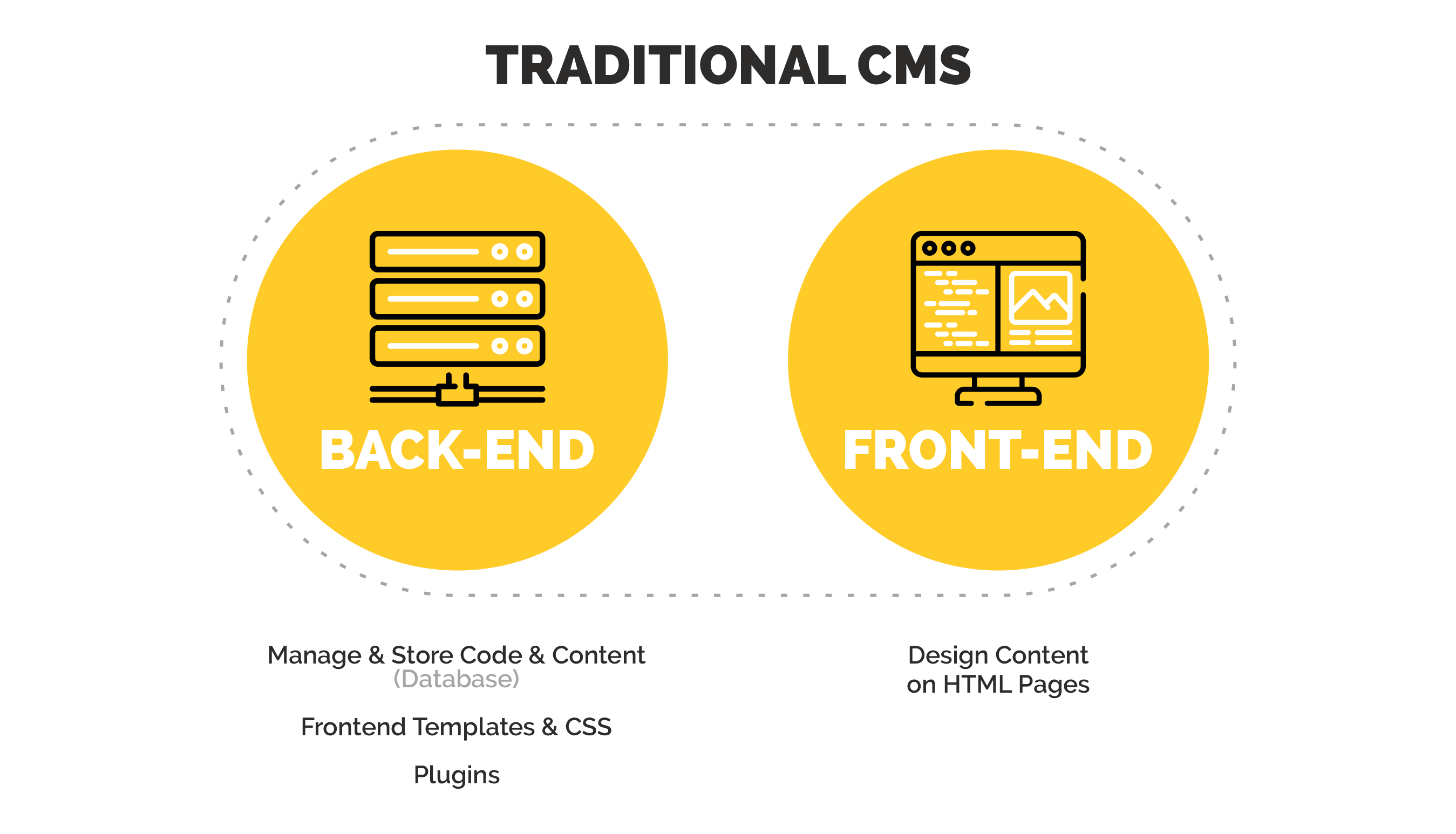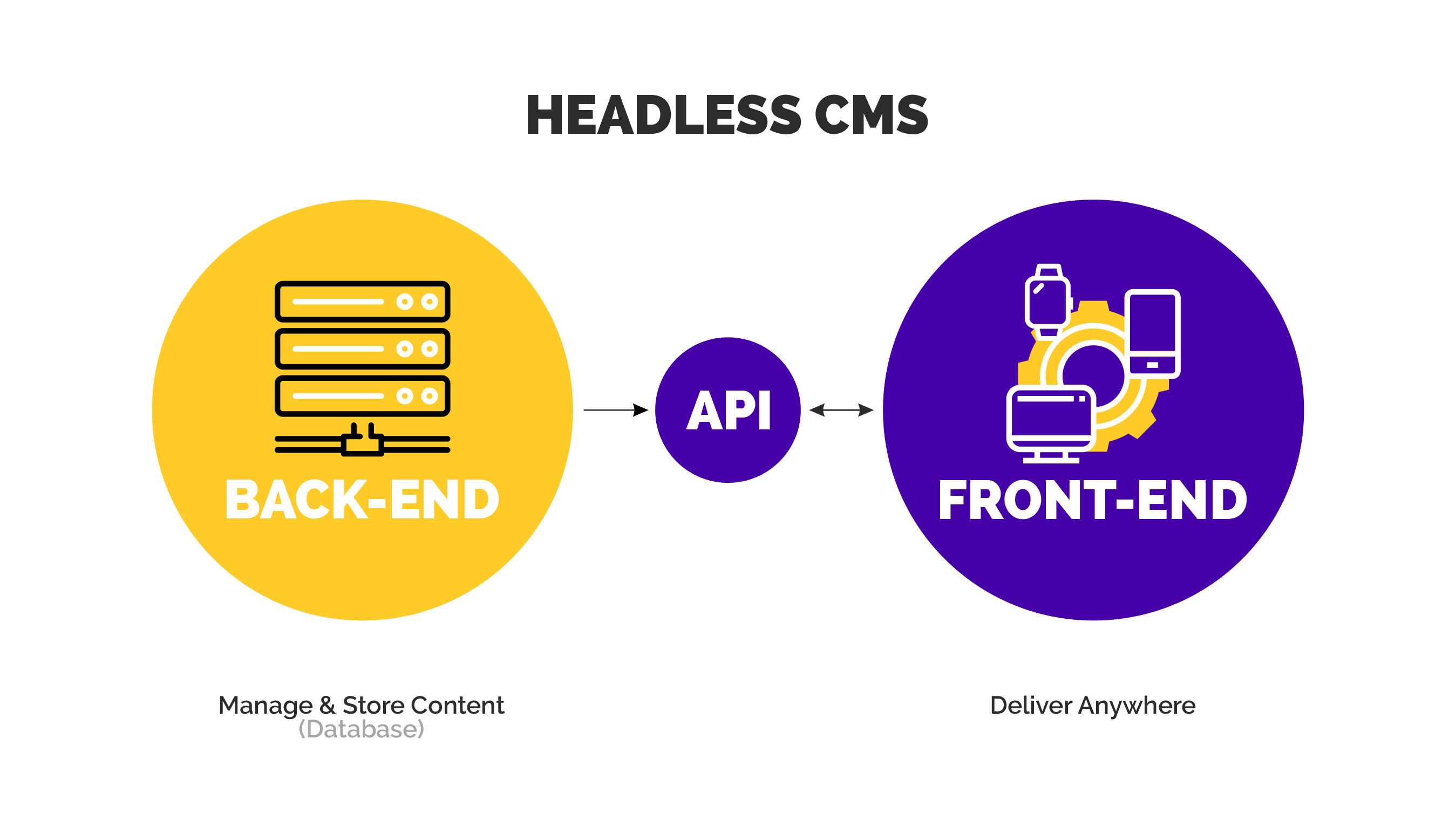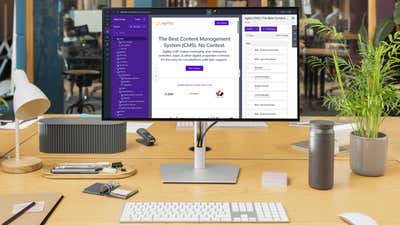What is a Headless CMS? A Beginner-Friendly Guide with Real-World Examples
No jargon. No tech talk. Just a simple explanation of what is a headless CMS


You’re in the market for a new content management system (CMS) and you’ve been seeing the term headless CMS more lately.
So what exactly is a headless CMS? Let’s break it down in plain English.
Traditional CMS vs. Headless CMS
To understand what is a headless CMS, let’s look at a traditional CMS, like Drupal or WordPress. In a traditional CMS:
- The head is the front-end. That’s the part users see, like a web page.
- The body is the back-end. That’s the part where content teams create and store content.

In a traditional CMS platform, the head and the body – just like yours in real life – are tightly connected. The CMS decides how and where content is shown based on its configuration.
For example, a traditional CMS might be great for a web page. But if you want to use your content in an app or smartwatch or display kiosk – theoretically you can, but it’s a very messy process.
What Makes Headless, Headless?
A headless CMS removes the head (front-end/what users see) from the body (back-end/where content is managed).
Which begs the question:
- If the head is detached from the body, how does content get from the back-end (where it’s stored) to the front-end (where it’s seen)?
The answer:
Let’s dive into this further.
How It All Works
First, a quick refresher:
- Head: Front-end, where content is displayed.
- Body: Back-end, where content is stored.
OK, now let’s imagine your CMS is a mannequin:
Traditional Version: Body and Head are Stuck Together
- That fixed head works fine for websites. But if you want your content to appear on an app, digital kiosk, or IoT display, you’ll need a new mannequin for each. That quickly gets repetitive and overwhelming.
Headless Version: Body and Head are Detached
- You have one body of content, and you can attach any head – like a website, app, kiosk, or smart device. The API is the neck that connects them, delivering content where it needs to go. It’s flexible, fast, and universal.
So here’s how it goes:
- Head: Front-end, where content is displayed.
- Neck: API that tells the body what type of content (website, app, etc.) the head needs.
- Body: Back-end, where content is stored.

And that’s what a headless CMS is.
Benefits of a Headless CMS
- Omnichannel Publishing: Use your content across many platforms, including websites, apps, kiosks, and more.
- Speed and Performance: Front-ends can be faster and more optimized as their built with modern frameworks.
- Developer Freedom: Front-end developers can use any stack they like.
- Scalability: A headless CMS is easier to scale and maintain as your needs grow.
- Future-Proof: Your content enjoys flexibility for new technologies as they emerge.
Who Should Use a Headless CMS?
- Companies with multiple websites or digital channels like web, mobile, and IoT.
- Development teams looking for full control over design and performance.
- Content teams looking for full autonomy over content without needing developer support.
- Brands planning to scale or adopt emerging tech like voice search, AR, or smart devices.
Look At It This Way…
A headless CMS is like a content hub. It’s your single source of truth. Instead of writing content repeatedly for different platforms, you write it once and serve it anywhere.
A Few Final Thoughts on What Is a Headless CMS
A headless CMS sounds technical, but the concept is simple: separate the content from how it’s displayed.
That’s it, really.
If you’re a developer looking for modern tools or a content creator who wants to publish everywhere, a headless CMS – just like Agility CMS – is the solution you’re looking for.
As Canada’s original headless CMS, Agility has supported noteworthy brands such as:
The Canadian brands you know? The Canadian websites you visit? There’s a good chance they’re powered by Agility CMS.
Want to Know More? Here’s How
- Get a personalized demo and see how Agility CMS powers omnichannel content delivery.
- Try Agility CMS free for 30 days.
- Contact us with any questions you have.

About the Author
Christopher Kislinsky is an Account Executive at Agility CMS. He brings five years of experience in sales and customer engagement within the SaaS and digital experience industries, helping enterprise organizations find the right solutions to scale and succeed.
View Related Resources

What’s Behind Door #1? Six Ways to Tell You’ve Picked the Right CMS

What’s a Headless CMS? Explained with Montreal Bagels (Infographic)

